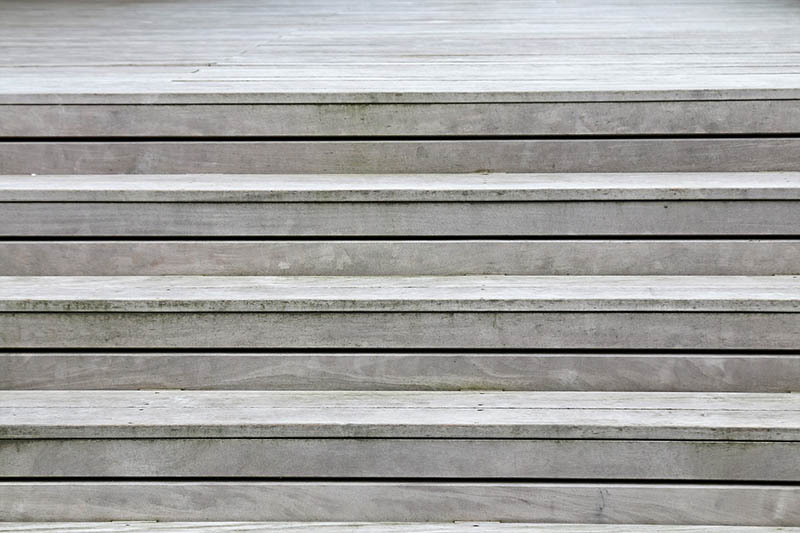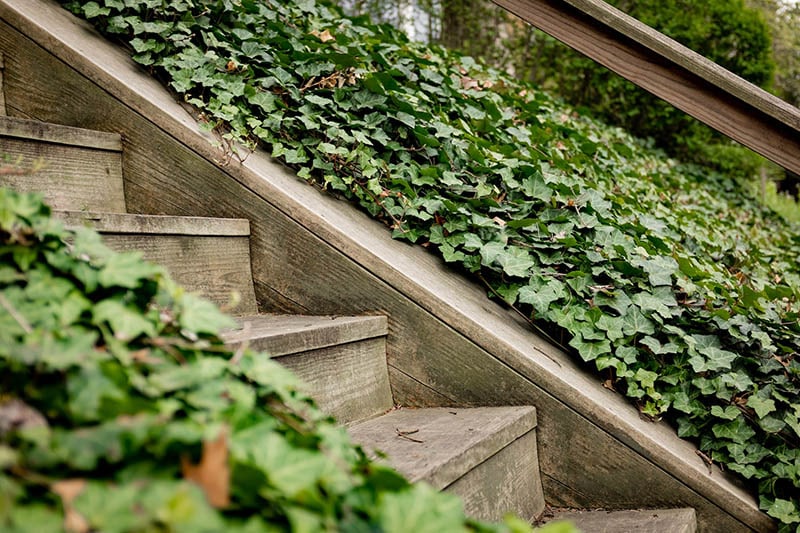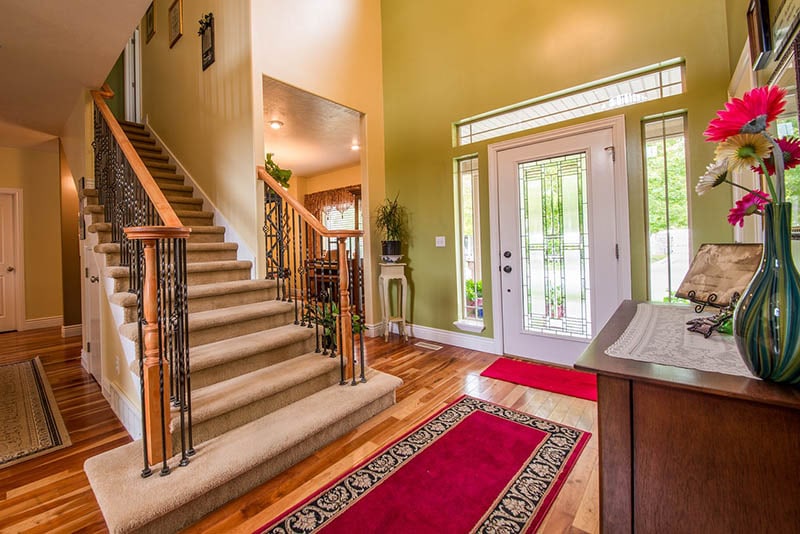What Is Stair Nosing? Pros, Cons, & Types
-
Codee Chessher
- Last updated:

Many of us probably never stop to consider how many parts are involved in a typical stairway. They have treads, rises, and nosing. Nosing can seem like an afterthought, but it’s actually an important part of any stairs. Let’s check out exactly what nosing is, what it does, and more relevant info about stair nosing. Stair nosing is the protruding horizontal edge along most stair treads.

What Is Stair Nosing and What Does It Do?
In homes, stair nosing typically matches the material of the step. For instance, a wood stair tread would simply extend a bit past the edge of the step as nosing. In industrial work settings, stair nosing is often made from a non-slip material to enhance safety.
Most people put their feet at the edge of the next stair tread when going up or down stairs, and this is where nosing comes in. Nosing serves as an easier place to put your feet, and it reduces the wear on the rest of the tread. This improves the lifespan of the treads and the stairway as a structure. As a clearly defined edge, stair nosing makes it clearer where steps begin and end. This is especially helpful for people with poor vision.
Stair nosing is becoming popular in public settings like schools, universities, courts, and offices. These walkways get a ton of traffic every day, and nosing helps reduce strain and wear on stairways. In homes, nosing may be required if your treads are less than 11 inches deep, but building codes vary. Your locality may have different rules regarding nosing and treads.
Regardless of where it’s found, stair nosing is always a stylish way to improve a stairway’s safety. You reduce the chances of slips and falls, and you can match the nosing to your steps and other architecture.

What Are the Different Types of Stair Nosing?
There are several styles of stair nosing that have their own unique look and benefits. Below, we’ll go into more detail about the types of nosing you can choose from.
No Overhang

This nosing sits flush with the riser, making the step to be one flush piece. This style is perhaps the most modern but may be harder to see than other nosings.
Half Round
This nosing style is mainly used for landing platforms, using a long straight edge that smooths to a half-moon curve around the opposite edge. Stylish, but reserved for landings along the stairway.
Pencil Round

One of the safest choices, pencil round nosing resembles a pencil laid on its side and smoothed out. The large, easily visible edges are a very safe choice for children, and they aren’t sharp like some other nosing choices. The face of the nosing is flat and can be adapted for any home style.
Square
Square nosing is a neat rectangular overhang along the tread edge, with defined edges. These edges are sharper than rounded nosing styles but are easy to see. This nosing works best for rustic wood stairways.
Where Is Stair Nosing Used?
Any area that gets large amounts of pedestrian foot traffic can benefit from stair nosing. In homes it enhances safety and reduces accidents. Areas like hospitals, offices, stadiums, and movie theaters often have stair nosing. It reduces wear on the treads, and in large buildings that can save money on stair maintenance.

Advantages of Stair Nosing
Stair nosing has a few distinct advantages that make it worth using in commercial or residential settings. Let’s check them out in more detail below.
Enhances Safety
Stair nosing provides a comfortable, easy-to-see edge so you can climb from step to step along a stairway. This reduces the chances of slips or falls, which is especially important for children and seniors. Stair nosing with alternative colors can further enhance the benefits of the extra lip. That can also help improve visibility at night or in dim lighting.
Protects the Stairway
Because most people place their foot along the nosing of steps, the rest of the treads don’t get as much wear and tear. Tread edges are protected from bumps, cracks, or other damage that can happen from heavy foot traffic. By protecting the stairs, the nosing saves money on maintenance costs over time.
Better Tread Visibility
Many of us have misjudged the edge of a step, and it’s not a fun experience. By providing easily visible contrast against the step, nosing makes it easier to judge where you should put your foot when climbing stairs.

Disadvantages of Stair Nosing
Despite being a great safety measure, nosing has some common problems. If you’re thinking about getting nosing installed, you should check out some of these problems below, so you know what to expect.
Some Nosing Can Become a Slip Hazard
If it isn’t made of slip-resistant material, nosing can get wet and become a serious safety hazard. This presents issues for, say, malls with food courts. Another case would be if it’s raining or snowing – people could come in with wet feet and slip. It’s crucial to use non-slip materials for nosing if you expect it to get wet.
Plated Nosing Can Be Damaged
Metal-plated stair nosing can look modern and appealing, but it can suffer damage from heavy foot traffic. In fact, contractors typically only recommend using it in areas that aren’t main stairways. When plate nosing gets chipped, nicked, scratched, or otherwise defaced, it ruins the effect and can be a safety hazard. Be careful where you use it.
Improper Installation
If it’s not installed correctly, stair nosing can be a huge problem. It may be loose or become loose more easily, and it can make people trip if it comes loose at the wrong moment. It’s essential that you have your nosing securely installed in order to minimize safety risks.


Frequently Asked Questions (FAQs)
What stair nosing is the best?
For residential buildings, pencil round wood nosing is a great choice, and carpet nosing provides a better grip along the tread edges. Work or industrial settings would benefit more from aluminum nosing, which is durable and slip resistant. You should try to match your nosing to your stairs in an alternative color for maximum visibility. It also enables more nuanced decoration along the stairway.
Is nosing required by law?
Most building codes adhere to the 11-inch rule. That is, steps don’t require nosing if the tread is less than 11 inches wide. More narrow steps require nosing, and OSHA may have its own set of regulations for nosing in work and industrial settings. Always check whether your chosen nosing adheres to applicable building codes in your locality.
Conclusion
Stair nosing is an attractive way to make your stairs safer, and it’s widely available in different materials and styles to match any stairway. Be sure to check local building codes to see if your nosing is up to code.
Featured Image Credit: SJ 📸, Unsplash
Contents
